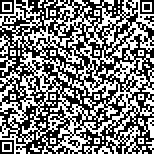| Quote
: |
姚玮琦, 董志华, 朱征, 于艺, 王迎冬, 周丹, 郭义.井穴电刺激干预阈下抑郁的效应及井穴电阻、血流同步变化特征的研究[J].湖南中医药大学学报英文版,2025,45(10):1901-1909.[Click to copy
] |
|
| |
|
|
| This paper
:Browser 114times Download 58times |
| 井穴电刺激干预阈下抑郁的效应及井穴电阻、血流同步变化特征的研究 |
| 姚玮琦,董志华,朱征,于艺,王迎冬,周丹,郭义 |
| (天津中医药大学实验针灸学研究中心, 天津 301617;天津中医药大学针灸推拿学院, 天津 301617) |
| 摘要: |
| 目的 观察井穴电刺激治疗阈下抑郁的临床疗效,探讨阈下抑郁人群手指井穴区域电阻及微循环血流灌注量的特征。方法 纳入阈下抑郁者和健康人,各31例。阈下抑郁组采用自主研发的经皮电刺激装置予以穴位电刺激治疗,穴取少商、商阳、中冲、关冲、少冲、少泽,每次30 min,每天1次,一周5次,连续治疗4周。于治疗前后和随访时,观察阈下抑郁组抑郁自评量表(SDS)、汉密尔顿抑郁量表-17项(HAMD-17)及世界卫生组织生存质量测定量表简表(WHOQOL-BREF)评分;并于治疗前后,采用中医经络穴位检测仪和激光散斑血流灌注成像仪检测井穴区域的电阻值及微循环血流灌注量;健康组不予任何干预,于入组即刻采集SDS、HAMD-17及WHOQOL-BREF评分,并检测井穴区域的电阻值及微循环血流灌注量。结果 与健康组相比,治疗前阈下抑郁组SDS和HAMD-17评分均升高(P<0.05),WHOQOL-BREF评分降低(P<0.05)。与治疗前相比,治疗后及随访时阈下抑郁组SDS和HAMD-17评分均降低(P<0.05),WHOQOL-BREF评分升高(P<0.05);与治疗后相比,随访时SDS和HAMD-17评分均降低(P<0.05),WHOQOL-BREF中生理和环境领域评分升高(P<0.05)。电阻检测结果显示,治疗前,阈下抑郁组少冲穴的电阻失衡率高于健康组(P<0.05);治疗后,阈下抑郁组少冲穴和中冲穴的电阻失衡率均较治疗前下降(P<0.05)。微循环血流灌注量检测结果显示,阈下抑郁组与健康组同名井穴微循环血流灌注量均未见显著差异,但阈下抑郁组整体呈现低于健康组的趋势;阈下抑郁组治疗前后比较,同名井穴微循环血流灌注量均无显著差异。结论 井穴电刺激可有效改善阈下抑郁人群的抑郁症状,提高生活质量,阈下抑郁人群在少冲和中冲穴上存在电阻失衡现象。 |
| 关键词: 井穴 穴位电刺激 阈下抑郁 皮肤电阻 微循环血流灌注量 经穴特异性 生活质量 |
| DOI:10.3969/j.issn.1674-070X.2025.10.013 |
| Received:December 03, 2024 |
| 基金项目:国家重点研发计划项目资助(2022YFC3500401)。 |
|
| Effects of electrostimulation at Jing-well points on subthreshold depression and the synchronous changes in their electrical resistance and blood perfusion |
| YAO Weiqi, DONG Zhihua, ZHU Zheng, YU Yi, WANG Yingdong, ZHOU Dan, GUO Yi |
| (Research Center of Experimental Acupuncture and Moxibustion, Tianjin University of Traditional Chinese Medicine, Tianjin 301617, China;School of Acupuncture, Moxibustion and Tuina, Tianjin University of Traditional Chinese Medicine, Tianjin 301617, China) |
| Abstract: |
| Objective To observe the clinical efficacy of electrostimulation at Jing-well points in treating subthreshold depression, and to explore the characteristics of electrical resistance and microcirculatory blood perfusion in the finger Jing-well point regions of individuals with subthreshold depression. Methods A total of 31 individuals with subthreshold depression and 31 healthy subjects were included. The subthreshold depression group received electrostimulation at the Shaoshang (LU11), Shangyang (LI1), Zhongchong (PC9), Guanchong (TE1), Shaochong (HT9), and Shaoze (SI1) acupoints using a self-developed transcutaneous electrical stimulation device for 30 minutes per session, once daily, five times a week, for four consecutive weeks. Before and after treatment and during follow-up, the scores of the Self-Rating Depression Scale (SDS), the 17-item Hamilton Depression Rating Scale (HAMD-17), and the World Health Organization Quality of Life Assessment Brief Version (WHOQOL-BREF) were recorded in the subthreshold depression group. Additionally, before and after treatment, the electrical resistance and microcirculatory blood perfusion in the Jing-well point regions were measured using the TCM Meridian and Acupoint Detector and PeriCam Perfusion Speckle Imager (PSI, Sweden), respectively. The healthy group received no intervention, and SDS, HAMD-17, and WHOQOL-BREF scores, as well as electrical resistance and microcirculatory blood perfusion in the Jing-well point regions, were collected immediately upon enrollment. Results Compared with the healthy group, the subthreshold depression group had higher SDS and HAMD-17 scores (P<0.05) and lower WHOQOL-BREF scores (P<0.05) before treatment. After treatment and during follow-up, the subthreshold depression group showed decreased SDS and HAMD-17 scores (P<0.05) and increased WHOQOL-BREF scores (P<0.05) compared with before treatment. Compared with after treatment, SDS and HAMD-17 scores decreased (P<0.05), and the scores in the physiological and environmental domains of the WHOQOL-BREF increased (P<0.05) during follow-up. The electrical resistance measurement results showed that before treatment, the resistance imbalance rate at the Shaochong (HT9) acupoint was higher in the subthreshold depression group than in the healthy group (P<0.05). After treatment, the resistance imbalance rates at the Shaochong (HT9) and Zhongchong (PC9) acupoints in the subthreshold depression group decreased significantly compared to pre-treatment levels (P<0.05). Microcirculatory blood perfusion measurement results showed no significant differences in the perfusion at the corresponding Jing-well points between the subthreshold depression and healthy groups, but the subthreshold depression group generally showed a trend of lower values than the healthy group. No significant differences in microcirculatory blood perfusion at the corresponding Jing-well points were observed within the subthreshold depression group before and after treatment. Conclusion Electrostimulation at Jing-well points can effectively alleviate depressive symptoms and improve the quality of life in individuals with subthreshold depression. Resistance imbalance is present at the Shaochong (HT9) and Zhongchong (PC9) acupoints in individuals with subthreshold depression. |
| Key words: Jing-well points acupoint electrostimulation subthreshold depression skin resistance microcirculatory blood perfusion acupoint specificity quality of life |
|

二维码(扫一下试试看!) |
|
|
|
|


